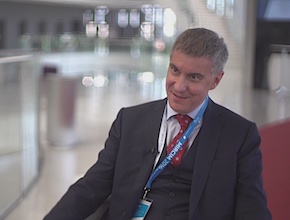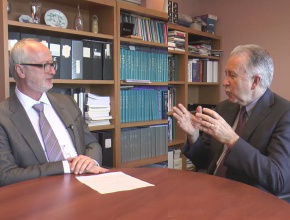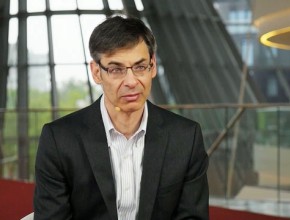References
Lee CH, Steiner T, Petrof EO, et al. Frozen vs Fresh Fecal Microbiota Transplantation and Clinical Resolution of Diarrhea in Patients With Recurrent Clostridium difficile Infection: A Randomized Clinical Trial. JAMA. 2016 Jan 12;315(2):142-9. doi: 10.1001/jama.2015.18098. PubMed PMID: 26757463.Moayyedi P. Fecal transplantation: any real hope for inflammatory bowel disease? Curr Opin Gastroenterol. 2016 Jul;32(4):282-6. doi: 10.1097/MOG.0000000000000285. PubMed PMID: 27152872.
Roman Jaeschke: Good afternoon, welcome to the first international segment of McMaster Perspective. We are in Kraków, it is May of 2016. I have the pleasure of introducing to you Dr. Paul Moayyedi, a world-famous gastroenterologist, past editor of the American Journal of Gastroenterology, and person involved in numerous practice guidelines in this area. Professor Moayyedi, the first question is something that keeps intriguing me yet I do not know much about. We keep hearing about microbiome. Could you take us through it?
Paul Moayyedi: It is a great question, Roman, and I think the honest answer is the scientific community is only waking up to the microbiome and does not know much about it either. It does seem to be important in a number of gastrointestinal (GI) diseases and even diseases outside the GI tract. If you think about it, 70% of your immune system is focused on your intestines and it has to do that because there are bacteria that outnumber our own body cells roughly by 100 to 1, with a very small 50-micron mucosa separating us from them. It is not surprising that all your immune system is focused on keeping the bacteria where they are, in your gut, and therefore if anything affects that balance it could lead to both GI disease but probably diseases outside the GI tract.
RJ: So when we use the phrase “microbiome,” do we mean the mass of bacteria that is inside us, effectively?
PM: The mass of organisms inside of us, so bacteria, viruses, fungi, and protozoa. What we have tended to focus on is bacteria. There are probably more viruses than bacteria, which is an even scarier thought, and we are recently interested in phages, which interact between bacteria and viruses. I think when people use the word microbiome, strictly it means any infectious organism, but we tend to be studying the bacteria.
RJ: What is its role? Or does it have any as we know?
PM: It does seem to be important for health. You can raise a mouse germ-free, so there are no infectious organisms at all in the GI tract, and those mice do live but they tend to be underweight, tend to be difficult to maintain, and generally are not as healthy as their colleagues who have bacteria. It does seem that these are helpful for our health, but obviously in some cases they can also cause disease.
RJ: So [what are] the practical consequences in terms of generating diseases, or do we at this stage of the game try to modify this microbiome?
PM: At the moment because there is this enormous signal, so many bacteria in the bowel, it is very difficult to pick what is healthy and what is not healthy. There is a term, “dysbiosis,” meaning unhealthy bacteria, but I feel that is like the term “miasma” that was used in Victorian times to mean bad air. It is a concept, it is sort of real, but not that helpful. Basically we do not understand at this stage what bacterial composition will lead to health versus disease and indeed it may differ from one individual to another.
I think what we have become interested in in recent times is there does seem to be bacteria that can lie dormant for many years and then at some point cause disease. A classic example of that is Helicobacter pylori, which we did not know about until the early 1980s, thanks to Robin Warren and Barry Marshall. Now we know that this sits in the stomach, causing no problems in the majority of people but certain individuals they will develop peptic ulcers and a few will sadly develop gastric cancer because of this organism. This is a model that probably exists throughout the GI tract but we have yet to unpick in other areas, as in the stomach there are very little organisms because of the acid – which, by the way, Helicobacter pylori is resistant to – but in the lower GI tract there [are so many organisms that understanding which could cause disease] is difficult.
This interview was recorded at the 2nd McMaster International Review Course in Internal Medicine in Kraków, Poland. To learn more, visit www.mircim.eu.
 English
English
 Español
Español
 українська
українська








